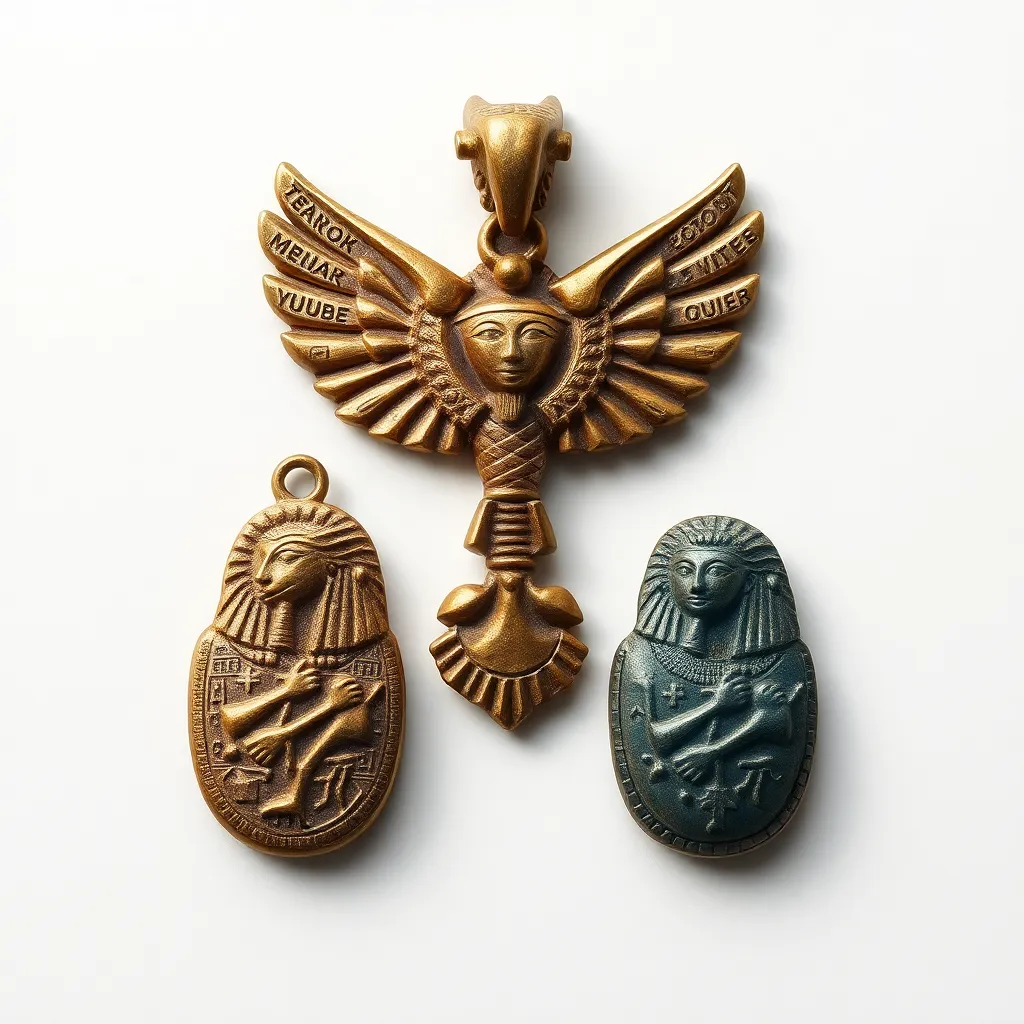Amulets for Protection Against Enemies in Ancient Egypt
I. Introduction
Amulets held profound significance in ancient Egyptian culture, serving not only as decorative items but also as powerful talismans believed to offer protection and favor from the divine. These objects were imbued with spiritual importance, crafted with care and intention to ward off malevolent forces and ensure safety in various aspects of life.
The ancient Egyptians placed immense value on protection, stemming from their belief systems that revolved around the balance between order (maat) and chaos (isfet). This fundamental duality influenced their approach to life, death, and the afterlife. The focus of this article will be on the specific amulets designed to offer protection against enemies, both physical and spiritual.
II. Historical Context of Enemies in Ancient Egypt
Throughout its long history, ancient Egypt faced numerous conflicts and threats from rival nations, internal strife, and supernatural forces. The frequent invasions by foreign powers, such as the Hyksos and the Assyrians, created a persistent need for protection among the populace.
In ancient Egyptian mythology, enemies were often represented as chaotic forces that disrupted the order of the universe. Deities like Set were associated with chaos and conflict, embodying the fears that the people faced. These mythological narratives reinforced societal fears, emphasizing the need for protective measures against both human and supernatural adversaries.
III. Types of Protective Amulets
Various materials were used in the creation of amulets, including stone, metal, and clay. Each material was believed to possess unique properties that contributed to the amulet’s effectiveness.
Some specific amulets designed for protection against enemies include:
- The Eye of Horus: Symbolizing protection, royal power, and good health, this amulet was believed to ward off evil and ensure the safety of its bearer.
- Scarab Amulets: Representing rebirth and transformation, scarabs were often worn for protection in life and the afterlife, serving as a shield against enemies.
- Ankh Symbols: The ankh, or key of life, was a potent symbol of eternal life and protection, often used in amulets to safeguard its wearer from harm.
IV. Symbolism and Meaning of Amulets
The spiritual significance of various symbols on amulets was paramount in ancient Egyptian belief. Each symbol carried specific meanings, deeply rooted in mythology and religion.
Inscriptions and texts on amulets played a crucial role in enhancing their protective qualities. These inscriptions often invoked the names of gods or included spells designed to provide safety from enemies.
The relationship between symbolism and protection from enemies is evident in the choice of symbols used on amulets. They were not merely decorative; they were carefully selected to invoke divine favor and shield the wearer from harm.
V. Rituals and Practices Surrounding Amulets
The creation and consecration of amulets were significant rituals in ancient Egyptian culture. Artisans often performed specific rituals to imbue the amulets with protective powers before they were sold or given to individuals.
Amulets were commonly worn in daily life, but they were particularly important during battles. Soldiers and warriors would carry specific amulets to invoke divine protection and boost their courage in the face of danger.
In burial practices, amulets were placed with the deceased to ensure protection in the afterlife. This practice reflected the belief that protection extended beyond death, safeguarding the soul against any adversities it might encounter in the journey to the afterlife.
VI. Amulets in Ancient Egyptian Warfare
Soldiers and military leaders often relied on amulets for protection during warfare. Historical records indicate that many warriors believed in the power of these talismans to bring victory and shield them from harm.
There are several accounts of amulets being worn during battles, where soldiers would invoke the protection of deities associated with war, such as Sekhmet and Horus. The psychological impact of wearing these amulets cannot be overstated; they provided soldiers with a sense of security and confidence in their endeavors.
VII. Archaeological Findings and Evidence
Archaeological discoveries have unveiled a wealth of protective amulets found in tombs and temples, providing insights into their usage and significance in ancient Egyptian society. These findings include amulets made from materials such as faience, gold, and semi-precious stones.
Analysis of the craftsmanship of these amulets reveals the skill and artistry of ancient artisans. Each piece was often uniquely designed, with careful attention to detail that reflected the beliefs and practices of the time.
Insights from ancient texts and artifacts further illuminate the role of amulets in protection. Numerous papyri and inscriptions document the rituals and beliefs surrounding the use of amulets, showcasing their integral place in ancient Egyptian culture.
VIII. Conclusion
In summary, protective amulets played a vital role in ancient Egyptian society, serving as powerful symbols of protection against enemies and adverse forces. Their significance extended beyond mere ornamentation; they were integral to the spiritual and physical well-being of individuals.
The legacy of ancient Egyptian beliefs continues to resonate in modern times, as many still find fascination in the symbolism and power attributed to amulets. The enduring allure of these protective objects reflects humanity’s universal desire for safety and security in an often unpredictable world.
Ultimately, the study of amulets and their protective power offers a glimpse into the rich tapestry of ancient Egyptian beliefs, revealing a culture deeply invested in the interplay between the physical and spiritual realms.




